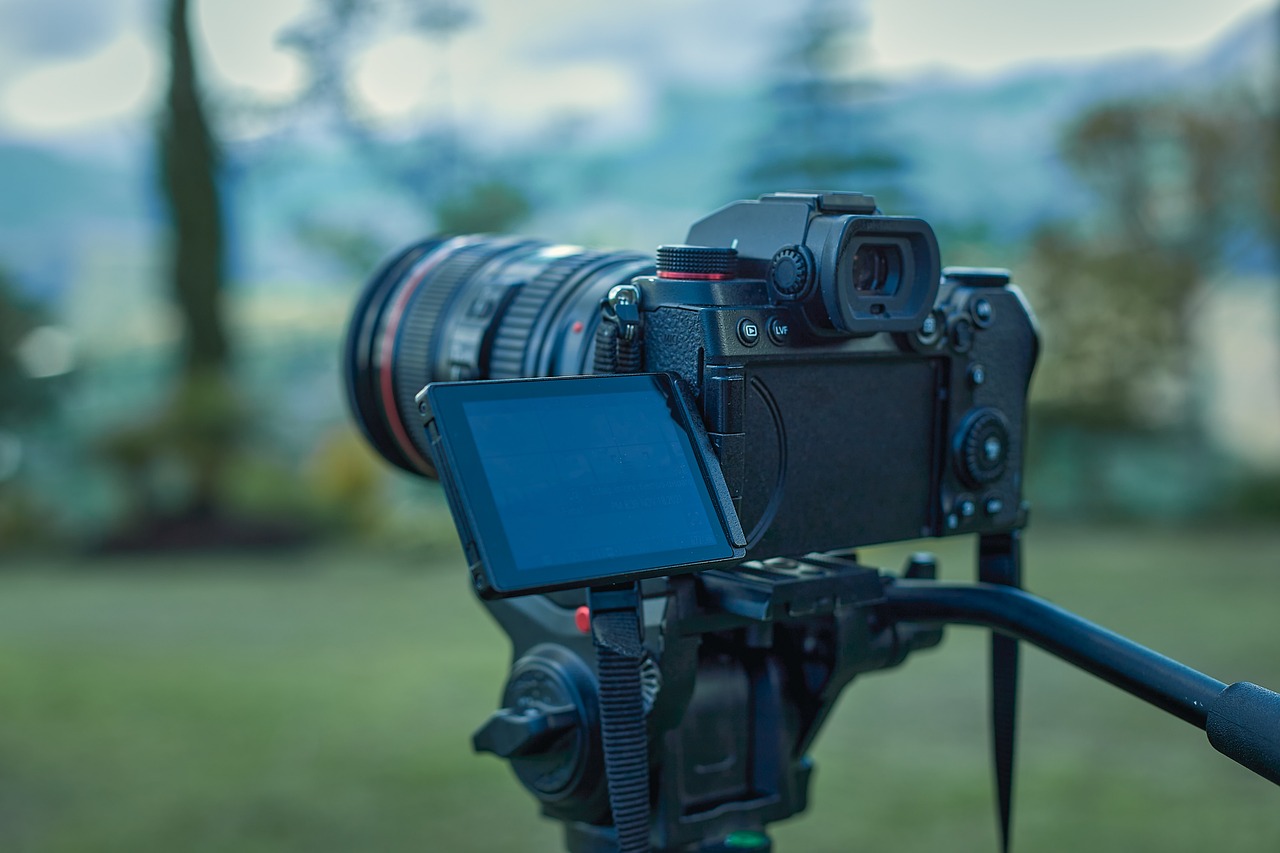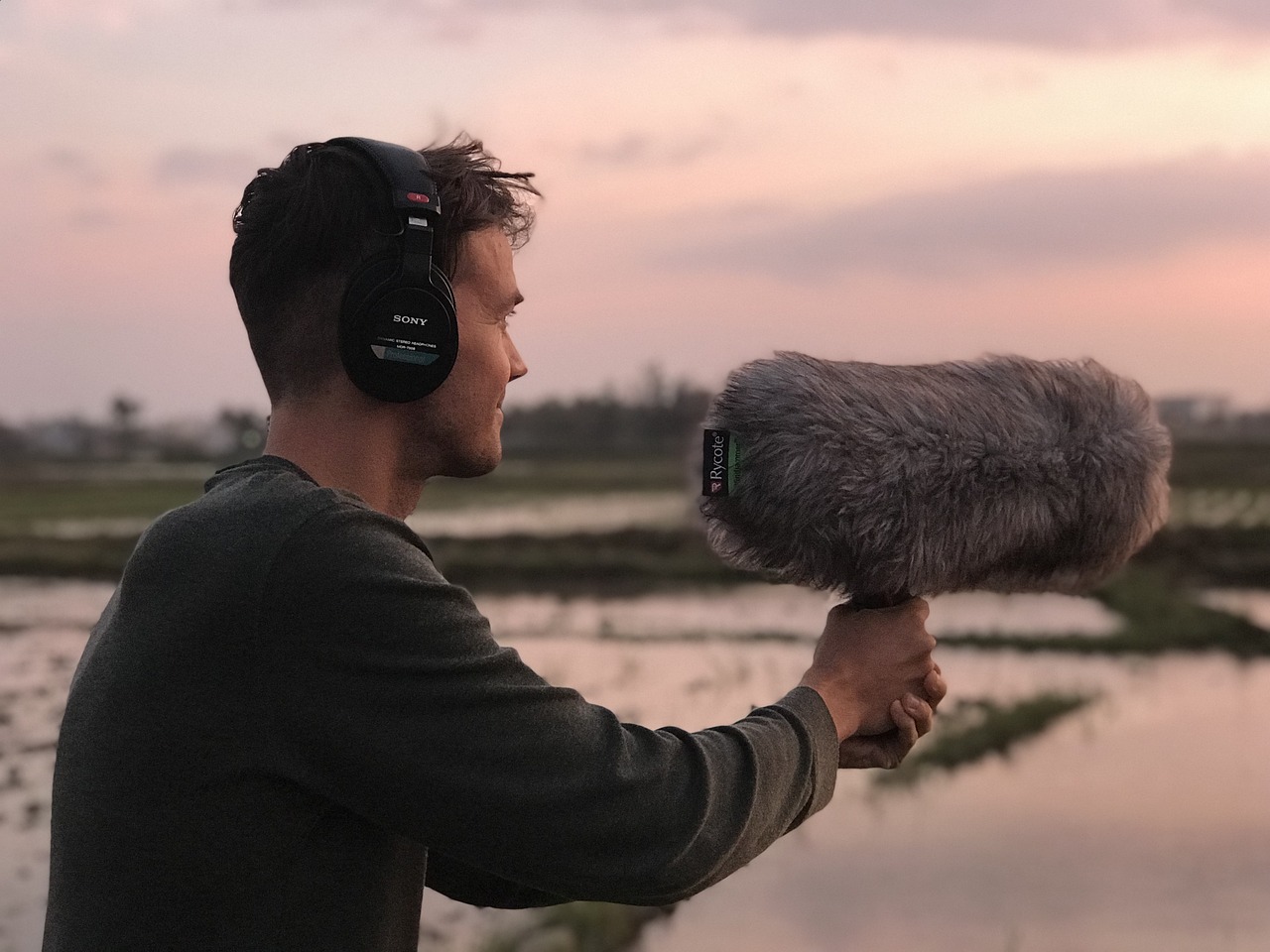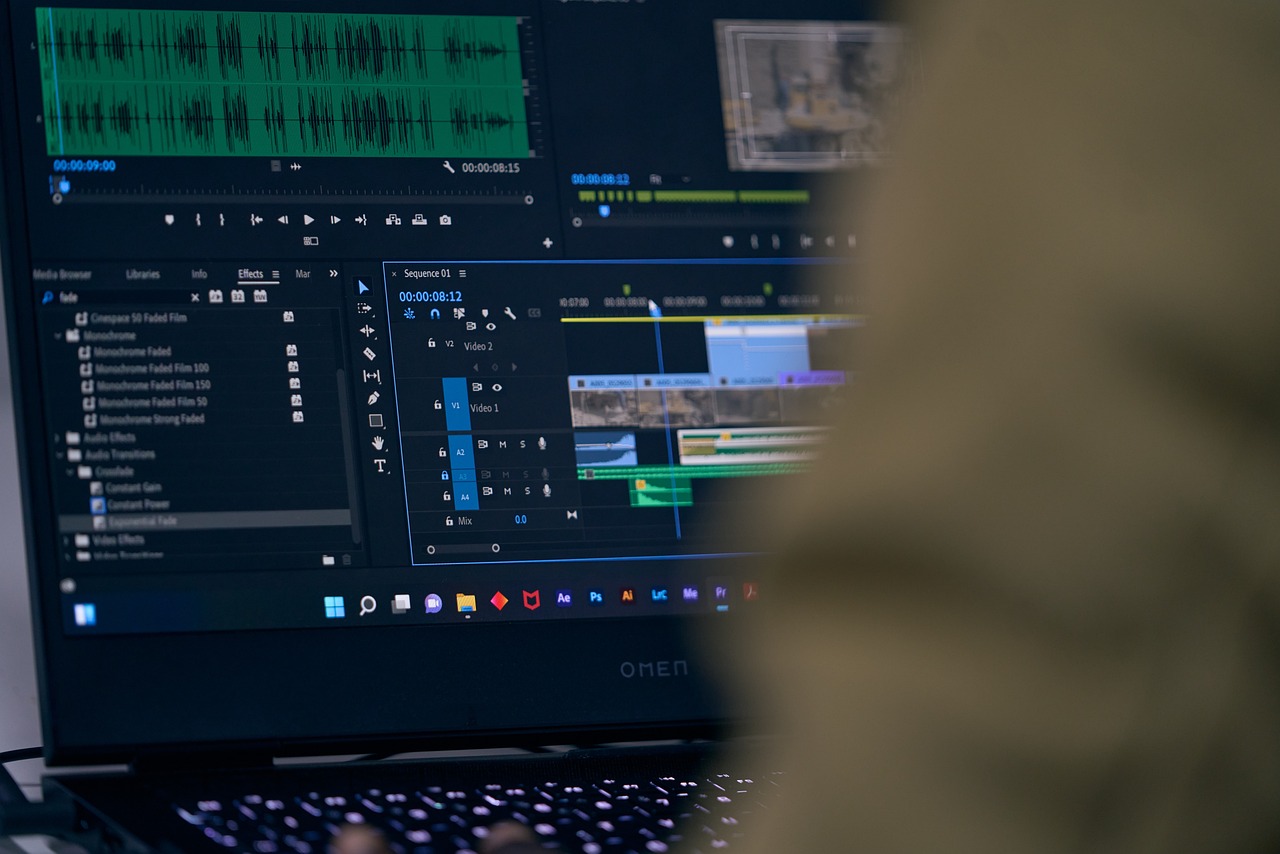Corporate Video Production Company in Durban: How We Stand Out As a top-notch corporate…
The Ultimate Guide to Videography in Durban
Introduction
Durban, a vibrant city on the east coast of South Africa, is a treasure trove for videographers. With its stunning beaches, bustling cityscape, and rich cultural heritage, Durban offers a myriad of opportunities for capturing breathtaking videos. Whether you’re a seasoned professional or just starting out, this ultimate guide to videography in Durban will equip you with the knowledge and tools you need to create stunning visuals that will leave a lasting impression on your audience.
Understanding the Basics of Videography
Videography is the art of capturing moving images and telling stories through the lens of a camera. It involves a combination of technical skills, creativity, and an understanding of visual storytelling. To excel in videography, it’s essential to grasp the fundamentals:
- Composition: The way elements are arranged within the frame can greatly impact the visual impact of your videos. Follow the rule of thirds, leading lines, and other composition techniques to create visually pleasing shots.
- Camera Settings: Familiarize yourself with essential camera settings such as aperture, shutter speed, ISO, and white balance. Understanding these settings will give you full control over exposure and depth of field.
- Movement and Stability: Experiment with different camera movements like panning, tilting, and tracking to add dynamism to your shots. Additionally, invest in a good tripod or stabilization system to ensure steady footage.

Choosing the Right Equipment
Selecting the appropriate gear is crucial for achieving professional-looking videos. Here are some key equipment considerations for videography in Durban:
- Camera: Invest in a high-quality camera that suits your needs and budget. Full-frame DSLRs or mirrorless cameras are popular choices among videographers for their excellent image quality and versatility.
- Lenses: A good set of lenses is essential for capturing different perspectives. Wide-angle lenses are ideal for sweeping landscape shots, while prime lenses can help achieve a shallow depth of field for intimate close-ups.
- External Microphone: To capture clear and crisp audio, consider using an external microphone. Shotgun microphones are great for on-location shoots, while lavalier microphones work well for interviews and presentations.
- Tripod or Gimbal: Ensure stability in your footage by using a tripod or gimbal. These tools minimize camera shake and allow for smooth panning and tracking shots.
- Lighting Equipment: While natural light can be a videographer’s best friend, having additional lighting equipment like LED panels or portable strobes can enhance your videos, especially in low-light situations.
Exploring Durban’s Scenic Locations
Durban offers a diverse range of scenic locations that serve as perfect backdrops for videography. Whether you’re interested in capturing the beauty of nature or the city’s architectural marvels, here are some top spots worth exploring:
- Golden Mile: This iconic stretch of beach offers breathtaking views of the Indian Ocean, with its golden sands and palm-fringed promenade. Capture the energetic atmosphere, surfers riding the waves, and vibrant beachfront activities.
- Ushaka Marine World: Delve into the underwater world at Ushaka Marine World, where you can film captivating footage of dolphins, sharks, and other marine creatures. Don’t miss the opportunity to capture the thrilling water slides and acrobatic performances at the water park.
- Moses Mabhida Stadium: Get a bird’s-eye view of Durban by ascending the iconic arch of Moses Mabhida Stadium. Shoot sweeping panoramas of the city skyline or capture adrenaline-pumping shots of bungee jumpers plunging from the stadium’s top.
- Botanic Gardens: For a tranquil and lush setting, head to the Durban Botanic Gardens. Film the vibrant colors of the flora, exotic bird species, and peaceful scenes of visitors strolling through the garden’s paths.
- Victoria Street Market: Immerse yourself in Durban’s vibrant culture and capture the sights, sounds, and colors of the Victoria Street Market. Film the bustling market stalls, aromatic spices, and unique crafts that reflect the city’s multicultural heritage.
Capturing the Essence of Durban’s Culture
Durban is a melting pot of cultures, and videography provides an excellent platform to showcase its rich heritage. To capture the essence of Durban’s culture in your videos, consider the following:
- Street Scenes: Wander through Durban’s streets and film the daily life of its diverse communities. Capture the vibrant street markets, lively street performances, and people going about their daily routines.
- Festivals and Celebrations: Durban hosts numerous cultural festivals throughout the year. Document the colorful processions, traditional dances, and music performances during events like the Durban International Film Festival, Diwali Festival of Lights, and Jomba! Contemporary Dance Experience.
- Local Cuisine: Durban is renowned for its culinary delights, particularly its Indian cuisine. Film the preparation of aromatic curries, the bustling spice markets, and locals enjoying traditional meals like bunny chows and samoosas.
- Township Life: Gain insight into the lives of residents in Durban’s townships. With respect and sensitivity, film their everyday activities, community projects, and inspiring stories that showcase the resilience and vibrancy of these communities.
- Historical Sites: Durban has a rich history, evident in its architecture and landmarks. Visit historical sites like the Durban City Hall, Juma Mosque, and Phansi Museum, capturing their unique architectural details and the stories they hold.
Mastering Lighting Techniques
Lighting plays a crucial role in videography, as it sets the mood, enhances visual impact, and creates depth in your shots. To master lighting techniques, consider the following:
- Golden Hour: Take advantage of the golden hour, the period shortly after sunrise or before sunset when the natural light is soft and warm. This time of day creates a magical ambiance and adds a beautiful glow to your footage.
- Backlighting: Experiment with backlighting to create silhouettes or add a sense of drama to your shots. Position your subject between the camera and a strong light source, such as the setting sun or a window.
- Three-Point Lighting: This classic lighting technique involves using three light sources: key light, fill light, and backlight. The key light provides the main illumination, the fill light softens shadows, and the backlight adds depth and separation from the background.
- Using Reflectors: Reflectors are affordable and versatile tools that bounce light onto your subject. They can be used to fill in shadows, redirect sunlight, or create catchlights in the eyes, adding a spark of life to your footage.
- Creating Shadows: Shadows can add depth and dimension to your videos. Experiment with different light angles to create interesting shadow patterns and play with the interplay between light and darkness.
Working with Sound
Good audio is just as important as stunning visuals in videography. To capture clear and high-quality sound, follow these tips:
- Use External Microphones: Built-in camera microphones often capture ambient noise and may not deliver the best audio quality. Invest in external microphones, such as shotgun mics or lavalier mics, to ensure clear and focused sound.
- Monitor Audio Levels: Keep a close eye on your audio levels while filming to avoid clipping or recording audio that is too low. Use headphones and check your audio meters to ensure optimal recording levels.
- Reduce Background Noise: When filming in noisy environments, use techniques like capturing room tone, using a windscreen or deadcat on your microphone, and selecting quieter shooting locations to minimize unwanted background noise.
- Record Separate Audio: If possible, record audio separately using a dedicated audio recorder or a dual-system setup. This allows for greater control during editing and ensures high-quality sound without any sync issues.
- Add Ambient Sound: Consider capturing ambient sound to enhance the overall atmosphere of your videos. Whether it’s the sound of waves crashing on the shore or the buzz of a busy market, ambient sound can add depth and immerse your viewers in the scene.
Editing and Post-Production
The editing process brings your footage to life and allows you to craft a compelling story. Here are some tips for effective editing and post-production:
- Organize Your Footage: Before diving into editing, organize your footage in a systematic way. Create folders and subfolders to store different shots, sequences, and audio files, making it easier to locate and access specific content.
- Choose the Right Editing Software: Select a video editing software that suits your needs and level of expertise. Popular options include Adobe Premiere Pro, Final Cut Pro, and DaVinci Resolve. Familiarize yourself with the software’s tools and features.
- Create a Storyboard or Timeline: Plan the structure of your video by creating a storyboard or timeline. This visual roadmap helps you organize your shots, transitions, and audio elements, ensuring a smooth and coherent flow.
- Color Correction and Grading: Enhance the visual appeal of your footage through color correction and grading. Adjust the exposure, white balance, and colors to achieve a desired mood or look, ensuring consistency throughout your video.
- Add Transitions and Effects: Use transitions to smoothly navigate between shots and create visual interest. Experiment with effects like dissolves, wipes, and overlays to add creative touches and convey emotions.
Building a Professional Portfolio
A strong portfolio is essential for showcasing your videography skills and attracting clients. Follow these steps to create a compelling portfolio:
- Select Your Best Work: Choose your most outstanding and diverse video projects to include in your portfolio. Highlight your versatility by including a range of genres, styles, and subjects that showcase your creativity and technical expertise.
- Create a Showreel: Compile a showreel that showcases snippets of your best work in a captivating and concise manner. Grab the viewer’s attention from the start and include your contact information at the end.
- Include Project Details: For each video project in your portfolio, provide a brief description that outlines the objective, challenges, and your role in the production. Mention any notable achievements, awards, or recognition received for each project.
- Categorize and Organize: Organize your portfolio based on categories or themes to make it easy for potential clients to navigate and find relevant samples. This could include categories like corporate videos, weddings, documentaries, or travel films.
- Create an Online Presence: Establish an online presence by creating a professional website or utilizing platforms like Vimeo or YouTube to showcase your portfolio. Optimize your website with relevant keywords and ensure a user-friendly interface.
Networking and Collaboration
Networking and collaboration are crucial for expanding your videography career. Here are some ways to connect with others in the industry and build fruitful relationships:
- Join Professional Organizations: Become a member of videography associations or organizations in Durban. These groups offer networking opportunities, workshops, and industry events where you can meet fellow videographers, exchange ideas, and learn from experienced professionals.
- Attend Workshops and Seminars: Stay updated with the latest trends and techniques by attending workshops, seminars, and conferences. These events provide valuable insights, foster connections, and help you expand your skillset.
- Collaborate with Other Creatives: Partner with photographers, musicians, writers, and other creatives to collaborate on projects. By pooling your talents, you can create multidisciplinary works that stand out and attract a wider audience.
- Utilize Social Media: Leverage social media platforms like Instagram, Facebook, and LinkedIn to connect with other videographers, potential clients, and industry influencers. Share your work, engage with others, and actively participate in relevant communities or groups.
- Offer your Services: Volunteer your videography services for local events, nonprofit organizations, or small businesses. This not only provides valuable experience but also helps you build a network of satisfied clients and generate positive word-of-mouth referrals.
Pricing Your Videography Services
Determining the right pricing for your videography services can be challenging. Consider the following factors when setting your rates:
- Time and Effort: Calculate the time and effort required for each project, including pre-production, shooting, and post-production. Consider the complexity of the project, the number of shooting days, and the level of editing involved.
- Equipment and Resources: Take into account the cost of your equipment, software, and other resources used for each project. This includes camera gear, lighting equipment, editing software subscriptions, and external services like color grading or sound mixing.
- Experience and Expertise: Factor in your level of experience and expertise in the field. If you’re just starting, it may be necessary to offer competitive rates to attract clients. As your skills and reputation grow, you can gradually increase your prices.
- Market Rates: Research the prevailing market rates in Durban and consider industry standards. Look at what other videographers with similar skill levels are charging to ensure your pricing remains competitive.
- Client Budget and Project Scope: Understand your client’s budget and the scope of the project. Tailor your pricing based on their requirements, expectations, and the potential value your services can bring to their project.
Frequently Asked Questions
- Q: What permits or licenses are required for videography in Durban?
- A: While general videography for personal or non-commercial use does not require permits, it’s essential to check local regulations and obtain permits for commercial shoots, drone videography, or filming in specific locations. Consult the KwaZulu-Natal Film Commission or eThekwini Municipality for guidance.
- Q: How can I capture smooth and stable footage without a tripod or gimbal?
- A: If you don’t have access to a tripod or gimbal, try using natural supports like walls or rocks to stabilize your camera. Additionally, practice steady handholding techniques, use your body as a stable base, and consider investing in a camera with built-in image stabilization.
- Q: What are the best settings for shooting videos in Durban’s tropical climate?
- A: Durban’s tropical climate can present challenges like high humidity and intense sunlight. To counteract this, use a lens hood to reduce lens flare, shoot in RAW format for better post-processing flexibility, and adjust your white balance settings to compensate for the strong sunlight.
- Q: How can I ensure good audio quality when filming interviews or conversations?
- A: To capture clear audio during interviews or conversations, use a directional microphone positioned close to the subject. Consider using a lavalier microphone for individual interviews or a shotgun microphone for group discussions. Use headphones to monitor the audio levels and reduce background noise as much as possible.
- Q: Are there any restrictions on filming in public spaces in Durban?
- A: While filming in public spaces is generally allowed in Durban, be mindful of individuals’ privacy and respect the rules and regulations of specific locations. Avoid filming sensitive areas like government buildings or private properties without prior permission.
- Q: How can I protect my equipment while shooting on Durban’s beaches?
- A: Shooting on Durban’s beaches requires extra precautions to protect your equipment from sand and water. Use protective covers or bags for your camera, lenses, and accessories. Consider using a lens filter to protect the lens from sand or sea spray. Be cautious of changing lenses in windy conditions and keep a lens cleaning kit handy.
Conclusion
Durban offers a wealth of opportunities for videographers to explore and capture its diverse landscapes, vibrant culture, and rich heritage. By mastering lighting techniques, capturing immersive sound, and honing your editing skills, you can create compelling videos that leave a lasting impact. Remember to build a strong portfolio, network with fellow professionals, and price your services thoughtfully to thrive in the competitive videography industry. Embrace the unique atmosphere and beauty of Durban as you embark on your videography journey in this vibrant South African city.






